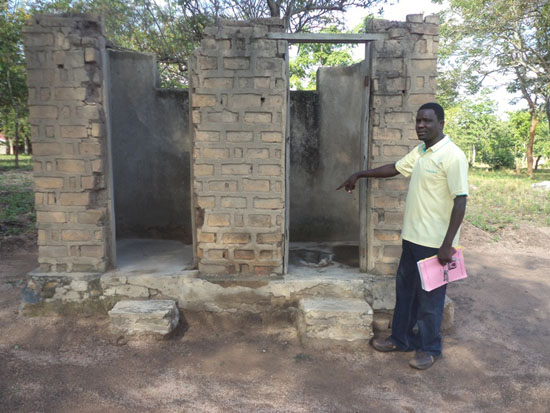At the turn of the new millennium, Pius Buchukundi, a doctor working with a health facility in Biharamulo faced a dilemma not uncommon in rural Tanzania, and found a way out. To save the lives of women who had to endure surgical intervention because of pregnancy related complications, Dr Buchukundi developed a way to use a beam torch to produce an operating light, in the absence of a conventional power supply.
The doctor’s invention attracted the attention of then Minister of Health and Social Welfare, Dr Anna Abdallah, who solicited funds from the World Health Organization (WHO) so that the enterprising doctor could study for a Masters in public health.
Several years later, in the same district, another doctor faces a more easily solved dilemma. Bismark Orduol, doctor in charge at Bwanga Health Centre, is in the awkward position of, amongst other things, living in a house that lacks adequate sanitation facilities; the dilapidated pit latrine serving his home has neither door nor roof, making privacy impossible.

A doctor in charge at Bwanga Health Centre, Bismark Orduol points at the dilapidated toilet facility at his residence. Because of the poor state of the facility, the doctor cannot use it during day time to avoid exposure to people walking along the place. Nor can he use it at night when there is darkness as this entails some risks of falling in the pit
Dr Orduol cannot use the toilet during the day when he must avoid the attention this would draw. Nor can he use it during the cover of night because of the risk it entails. What if he fell into the pit because of being hardly able to see his way around?
“I am disappointed by this situation. We have always budgeted for improvement of the health centre’s facilities including toilets but funds allocated were often inadequate,” he said.
The current problem began when thieves allegedly took advantage of the health centre’s lack of security and made away with the two metal door shutters. Without a fence, the health centre premises have turned into a convenient destination for a myriad of intruders. Goats, dogs and chickens wander through uninvited.
Chato District Medical Officer, Dr Eribariki Mollel attributes the situation at the centre to inadequate funds .
“The district receives Sh208 million from government but it is often disbursed piecemeal. We also earn around Sh623 million in revenue from own sources but this is not enough to cater for the infrastructure needs of most of the health facilities in the district.
Meanwhile, Dr Orduol doesn’t know what to do about his predicament. He is contemplating applying for advanced medical studies to get away from what relentlessly makes him so unhappy. .
“I think this is why most medical staff do not like working in rural areas,” he says.
The Service Availability Mapping Survey 2006 cites Tanzania as a case of one of the lowest doctor to patient ratios in the world. The survey reveals a ratio of one doctor for every 30,000 people. In the United States there is one doctor for every 300 people. The survey also reported about 1,339 doctors in Tanzania, including 455 in the private sector.
“About half of all doctors were employed in the Dar es Salaam region (52 percent), which had 2.5 doctors for every 10,000 people –a density 6 times higher than the national average of 0.4 doctors per 10,000 people” reads part of the survey, adding that about fourteen out of 26 regions had only 0.1 doctors or less per 10,000 people.
The World Health Organization also sounds a similar alarm saying Tanzania is 89,000 healthcare workers short and without intervention, the gap is expected to exceed 100,000 by 2019. Demoralized medical staff in poor working environments is singled out as one of the factors that exacerbate the problem.
